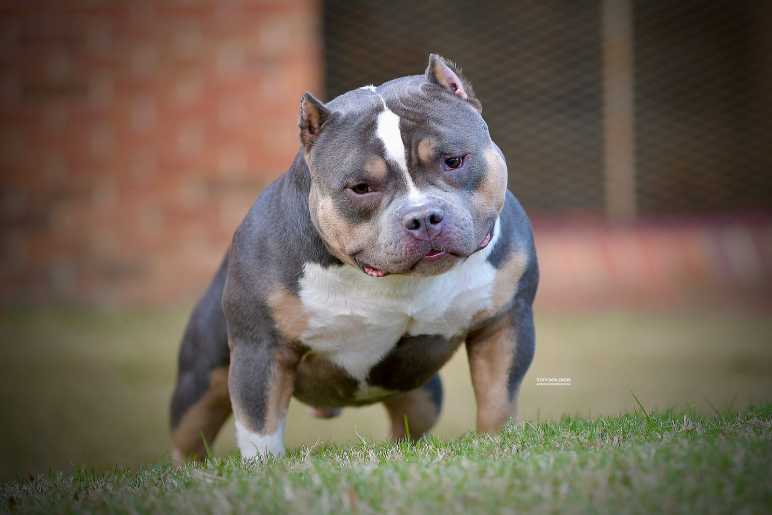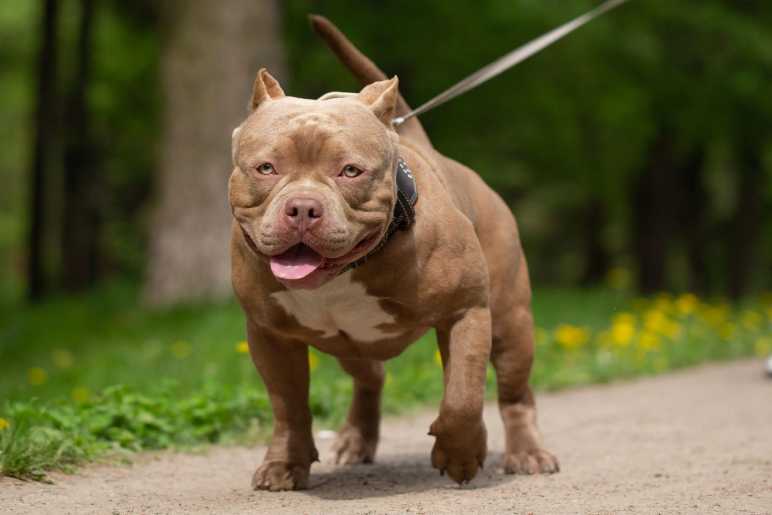The Pocket Bully has become one of the most sought-after dog breeds in recent years, known for its compact size, muscular build, and affectionate nature. Despite their intimidating looks, these dogs are incredibly loving and make great companions. In this comprehensive guide, we’ll explore everything you need to know about Pocket Bullies, including their history, characteristics, care, and training tips. If you’re considering adding a Pocket Bully to your family, this guide will help you make an informed decision.
What is a Pocket Bully?

A Pocket Bully is a smaller version of the American Bully, a breed that originated in the United States in the 1990s. This breed was created by crossbreeding the American Pit Bull Terrier and the American Staffordshire Terrier. Over time, breeders selectively bred smaller versions of the American Bully, which led to the development of the Pocket Bully.
Unlike other miniature or toy breeds, the Pocket Bully maintains the muscular, stocky appearance of its larger counterparts but in a more compact package. Pocket Bullies typically weigh between 11-22 pounds and stand no taller than 17 inches at the shoulder. Their smaller size makes them ideal for apartment living or homes with limited space.
Temperament and Personality

Despite their tough appearance, Pocket Bullies are known for their friendly and affectionate nature. They are great family dogs and are especially gentle with children. Here are some key traits that define the Pocket Bully’s temperament:
- Loyal: Pocket Bullies are incredibly devoted to their families and are known for forming strong bonds with their owners.
- Friendly: They get along well with other pets and are usually sociable with strangers when properly introduced.
- Confident: These dogs have a confident demeanor and are not easily intimidated, despite their smaller size.
- Energetic: Pocket Bullies have plenty of energy and enjoy playtime and outdoor activities.
- Protective: While they are not overly aggressive, they can be protective of their family if they sense danger.
Because of these qualities, Pocket Bullies make excellent family pets. They are also great with children due to their patience and gentle nature. However, proper training and socialization are essential to ensure they grow into well-mannered dogs.
Health and Lifespan
Pocket Bullies are generally healthy dogs, but like all breeds, they can be prone to certain health issues. On average, they have a lifespan of 10-12 years. To ensure your Pocket Bully lives a long, healthy life, it’s important to be aware of potential health concerns, including:
- Hip Dysplasia: A common issue in many dog breeds, hip dysplasia occurs when the hip joint doesn’t develop properly, leading to pain and mobility problems.
- Brachycephalic Syndrome: Due to their short snouts, Pocket Bullies can be prone to breathing difficulties, especially in hot weather or during strenuous exercise.
- Skin Allergies: Some Pocket Bullies may suffer from skin allergies, which can cause itching, rashes, or infections if not treated.
Regular vet check-ups, a balanced diet, and exercise can help prevent many of these issues. Always consult your vet for advice on maintaining your Pocket Bully’s health.
Caring for a Pocket Bully

Caring for a Pocket Bully is relatively straightforward, but it does require a commitment to their physical and emotional needs. Here are some tips on how to provide the best care for your dog:
Diet
A healthy diet is essential for keeping your Pocket Bully in top condition. Because of their muscular build, they require high-quality protein-rich foods to maintain their strength and energy levels. Consider feeding them a balanced diet of lean meats, fish, vegetables, and grains. It’s also important to avoid overfeeding, as Pocket Bullies can be prone to obesity, which can lead to additional health issues.
Exercise
Pocket Bullies are energetic dogs that need regular exercise to stay healthy and happy. Daily walks, playtime, and outdoor activities like fetch or agility training are great ways to keep them engaged. However, due to their compact size, they don’t require as much exercise as larger breeds. About 30-45 minutes of physical activity per day should suffice to keep them in shape.
Grooming
Pocket Bullies have short, smooth coats that are relatively low-maintenance. Regular brushing will help keep their coat shiny and free of loose fur. Bathing them once a month or as needed will also keep their skin healthy. Don’t forget to check their ears and teeth regularly to prevent infections or dental issues.
Training a Pocket Bully
Training a Pocket Bully is crucial to ensure they grow up to be well-behaved, social dogs. Like all dogs, they respond best to positive reinforcement and consistent training methods. Here are some tips for training your Pocket Bully:
- Start Early: Begin training and socialization when your Pocket Bully is still a puppy. This will help them learn good behavior and prevent issues like aggression or fearfulness.
- Positive Reinforcement: Reward good behavior with treats, praise, or playtime to reinforce positive actions. Avoid harsh punishments, as this can lead to anxiety or behavioral problems.
- Socialization: Expose your Pocket Bully to different environments, people, and animals early on. This will help them become well-adjusted and confident in various situations.
- Consistency: Be consistent with your commands and routines to avoid confusing your dog. Set clear boundaries and stick to them.
For those who need help with training, professional services like Dog Training Liverpool offer specialized programs tailored to your dog’s needs. Whether you’re focusing on basic obedience or tackling more complex behaviors, professional training can make a big difference in your dog’s development.
Are Pocket Bullies Right for You?
Pocket Bullies are ideal for those looking for a loyal, affectionate, and energetic companion. Their compact size makes them perfect for smaller homes or apartments, and their friendly nature makes them great family dogs. However, it’s important to remember that they require consistent training and regular exercise to thrive.
Before getting a Pocket Bully, consider your lifestyle and whether you can meet their needs. If you’re willing to invest time and effort into their care, a Pocket Bully can be a wonderful addition to your household.
Conclusion
The Pocket Bully is a unique breed that combines the strength and loyalty of larger bullies with a more manageable size. Their loving nature, combined with their confident and friendly demeanor, makes them a popular choice for many dog lovers. By understanding their needs and providing proper care, you can enjoy many years of companionship with your Pocket Bully.
If you live in the Liverpool area and are considering getting a Pocket Bully or need assistance with training, professional Dog Training Liverpool services can provide you with the support you need to ensure your dog grows into a well-behaved, social companion.
Have A Look :-
